Today is our first full day in the cosy coastal village of Stanley here on the North West Coast of Tasmania. The weather has been typical for a Tassie Summer with rain, strong, gusty winds and cold temperatures broken up with moments of brilliant blue sky and hot sun.
Today has been mostly the cold, windy and rainy type, but that suited us just fine as we spent the majority of the day indoors. We had a late breaky after a sleep in (we didn’t wake until 6am!) and then we jumped in the car to go adventuring.
We wound our way along the streets beneath The Nut and found ourselves climbing towards a spectacular view of the Nut jutting straight up from the water’s edge.
For some miraculous reason the clouds had parted, and we were presented with a view so breathtaking that Chris risked life and limb to capture it – quite literally! He was lining the Nikon up ready to hit the trigger when he let out an almighty groan and spun away from the fence towards me. It was one of the funniest things I’ve ever seen! Of course, I was concerned, but never the less … I couldn’t help but laugh. The look on his face was priceless, and what made things even better was the fact that I was in the middle of taking a panorama shot and Chris was right in it. He’d been shocked by the electric fence and I’d captured the very moment he spun around in agony!

Being the resilient man that Chris is (one who cares nothing about pain), he got over it pretty quickly with a few deep breaths and got some epic shots not just from there, but also from the ruins we stumbled upon just around the corner. The ruins of this 1836 convict barracks provided the exact shot that he was after. And I got the shot I was after – Chris taking the shot!


It turns out that the 73 convicts assigned to help establish Highfield had occupied this building for about 2 years. ‘What was Highfield’ I wondered as I climbed back into the car and we kept driving.
We only had to drive around the bend to discover that Highfield was right there in front of us; a historic manor that sprawled across green pastures with incredible gardens and views across to Stanley, The Nut and Bass Strait and beyond.
We couldn’t drive past as we had promised the kids, we’d find some ‘old buildings’ and they were begging us to look inside. Chris and I really wanted to go through as well, so we pulled into the almost empty gravel car park and started wandering down one of the many paths through the impeccably kept gardens and around to the back of the house.

Aylah turned the brass door knob and pushed the big green and glass door open ever so carefully. This house demands your respect from the moment you enter the grounds.
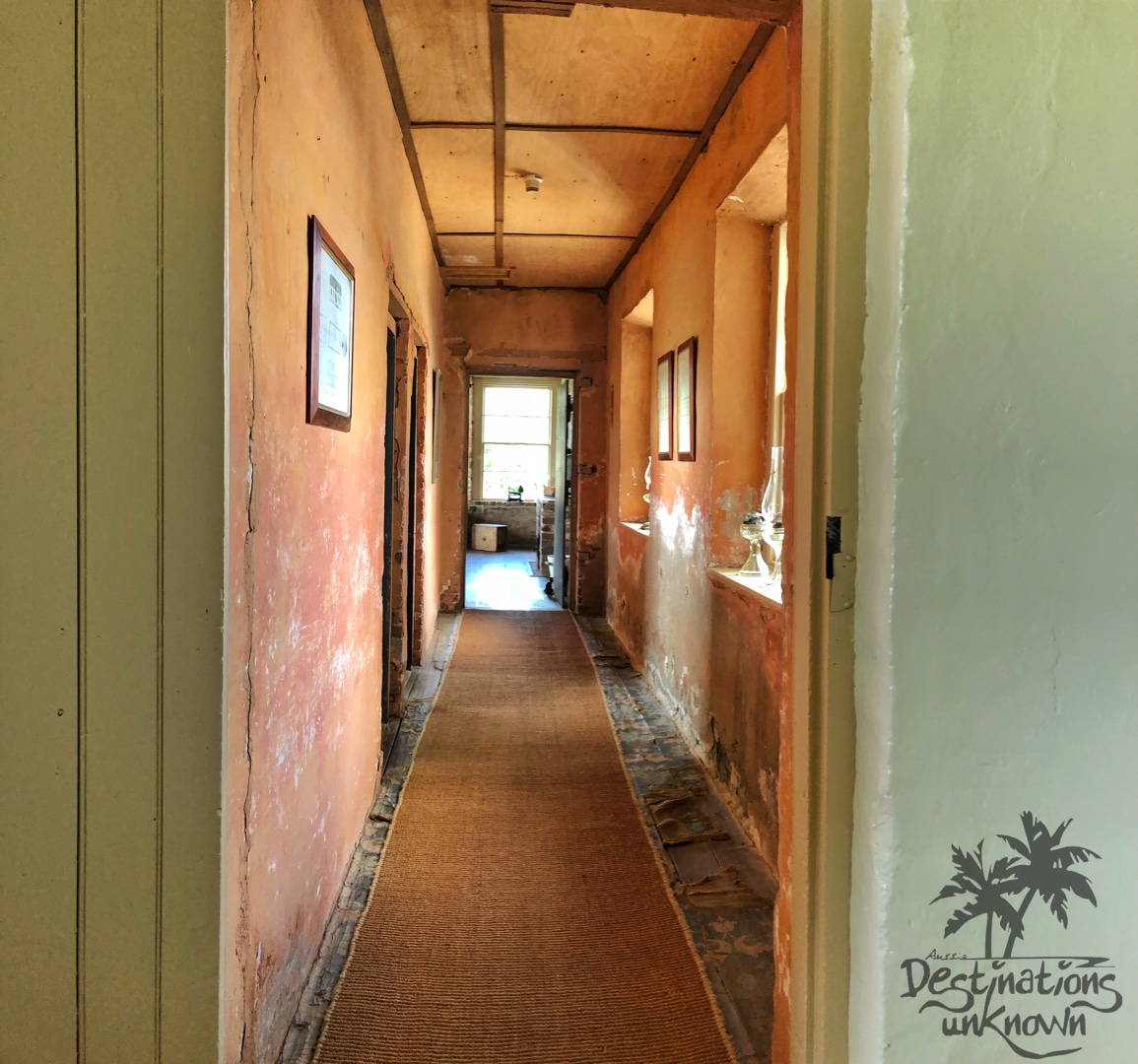
What we walked into was a long corridor with walls lined with artwork, rooms filled with antique furniture and … and … Charli and I got carried away and turned right and found ourselves in a dining room complete with a table, chairs, china cabinet, piano, marble fireplace and the sounds of a dinner party in progress.

Chris’s voice calling my name dragged me back to the present and we followed it until we found him in the office with a lady from Parks and Wildlife Service. She explained where we were, a little of the history and how to make the most out of our visit. We were given a map with the layout of the property that had all rooms numbered and a little bit of information about them. There is a very reasonable admission price of just $12 adults, $10 concession and $6 for kids, Or if you’re a family like us with 2 adults and 3 kids, just $30.
Highfield House is regarded as the ‘birthplace’ of European settlement in Tasmania’s north-west. From here, the London based Van Dieman’s Land Compan (VDLC) explored and settled the area. Edward Curr, the chief agent of the VDLC, started construction in 1832 and it took about 3 years to complete.
Originally the settlement covered about 350,00 acres but has now reduced down to around five acres.
The Van Diemen’s Land Company had the intention of making a fortune from fine merino wool like others were in Tasmania at the time, but they misjudged the terrain and lost most of their sheep within the first 3 years.
Stud livestock, implements, craftsmen and indentured labourers from England (along with convicts assigned form Hobart) arrived in October 1826.
Over a period of 25 years, their original investment of £600,000 gave them a return of just £34,054.
We were told a little about those who lived there including the Curr family who had no less than 15 children, all who were sent back to England about aged 4 to do their schooling. All except little Juliana who died tragically at just 2 years of age when the family dog who was pulling her along in a little cart raced off to fight another dog and dragged her under a fence causing her to knock her head. Her grave is out in the yard marked with a tomb that is surrounded by honeysuckle and sweet briar in a beautiful alcove.

We heard much about Edward Curr and thought he was a grumpy old man, so imagine our surprise when we found out he was just 27 years old!
The house represents an important part of Tasmanian historic heritage, and you are able to walk through and experience what life would have been like back in the early 1800’s.
We agreed that we would all stick together and we headed down to room 2. Room 1 was the Butler’s Pantry that is now reception.
Room 2 is The Gallery where you ‘went to meet the characters who envisioned the enterprise and those who lived, loved and worked in the house and around the estate’.

Here we saw the faces of many familiar people including Matthew Flinders and George Bass. They were of course the first Europeans to charter the Bass Strait in 1798 and responsible for mapping and naming many of the geographical landmarks including Circular Head and Cape Grim.
This room also had a marble fireplace, 3 large bay windows overlooking the gardens and various pieces of furniture scattered around.

We walked through and into room 3 – The Drawing Room, or ‘The Room of First Impressions’.
‘From the windows the wonderful view belies the wild and almost impossible task that the first settlers faced tackling the impenetrable bush accessed only by sea or hazardous trekking over unchartered mountains and marshy plains.’
The girls immediately claimed this room as it was a room reserved for entertaining guests and where the ladies came after dinner when the men retired to the gallery to enjoy their port and cigars.

Here we found more incredible artwork, yet another marble fireplace, another piano, an old black singer sewing machine, a few other bits and pieces including some chairs and a couch that said ‘no bottoms please’ but had obviously had more than a few park themselves on it! It was a little ‘saggy’ in places.


We consulted the map to find that room 4 is The Study, or ‘The Room of Despatches’. Things started getting interesting in this old green room that was filled with books, desks, writings, an intricate hand drawn map of the area and even markings of the children’s heights scribbled onto the wall next to the wooden fireplace.
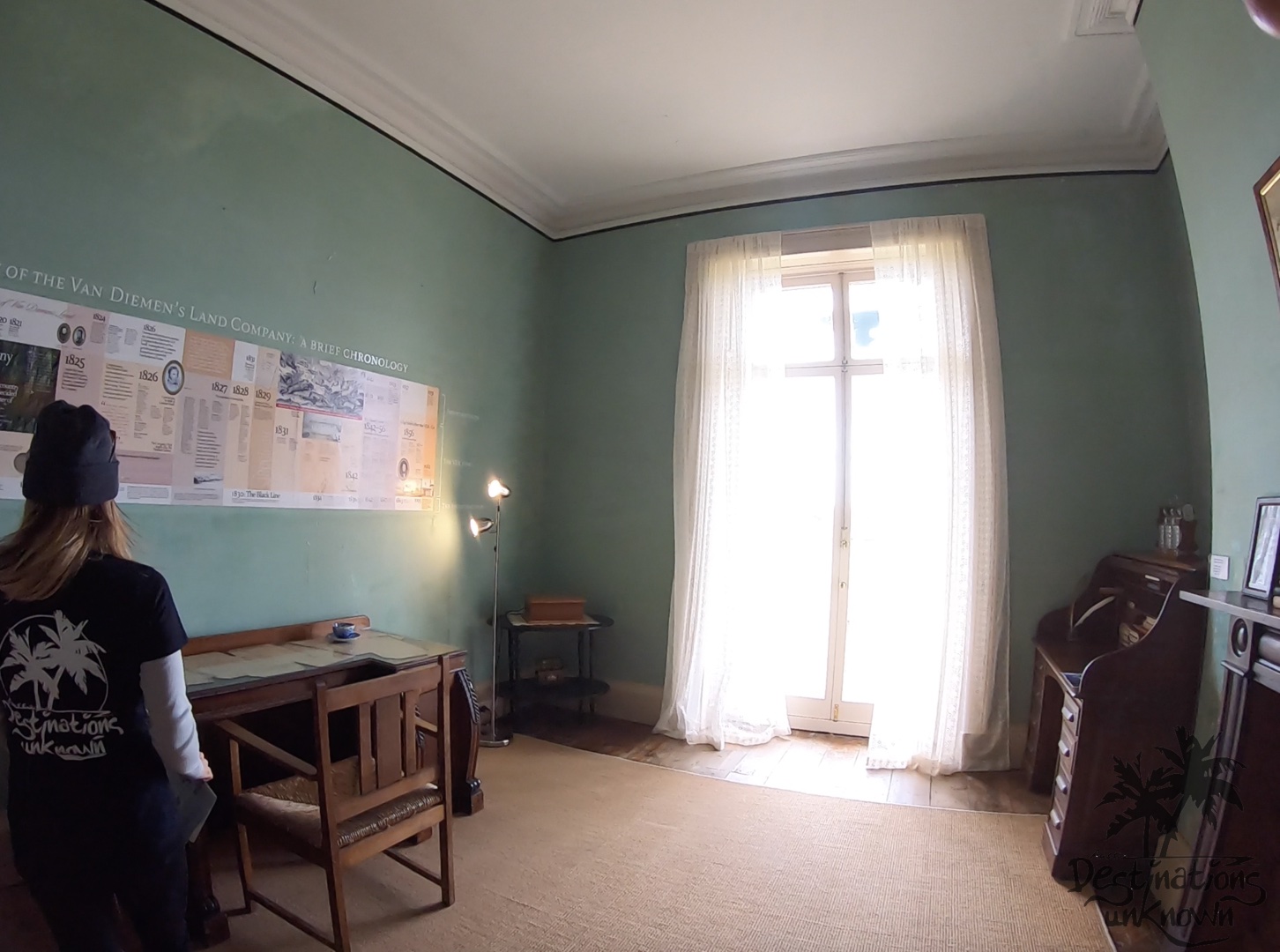


Room 5, The Dining Room or ‘Room of Conversations’ is where Charli and I were in at the very beginning. The dining table is covered with snippets of conversations that may have been discussed.
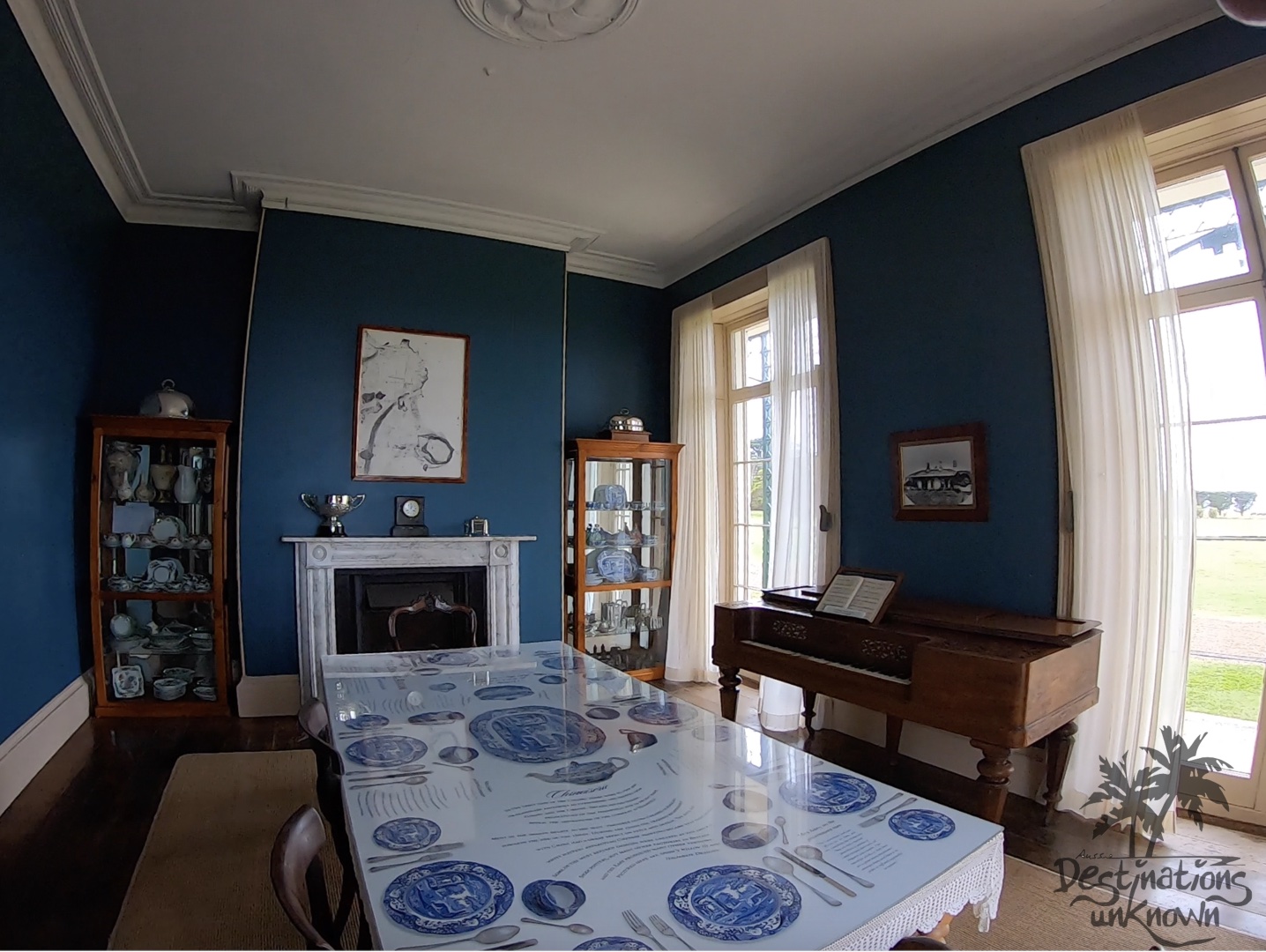
Room 6 is The Cellar or ‘Room of Provisions’ and was described by the kids as ‘this could be Minecraft!’ It smelled musty and had low ceilings, wooden beams and a cobblestone floor. There is a huge list of all the provision needed to start a settlement that you can read through.

Room 7 is the Master Bedroom or ‘The Room of Reflection’ and is where all three kids nearly jumped out of their skin when a recording of someone crying started to play from behind some clothing! There is an incredible view across the gardens from the window which can be seen from the wooden 4 poster bed that the kids described as ‘too small for even us to sleep in!’ The ensuite sure made us appreciate the one we have back home!


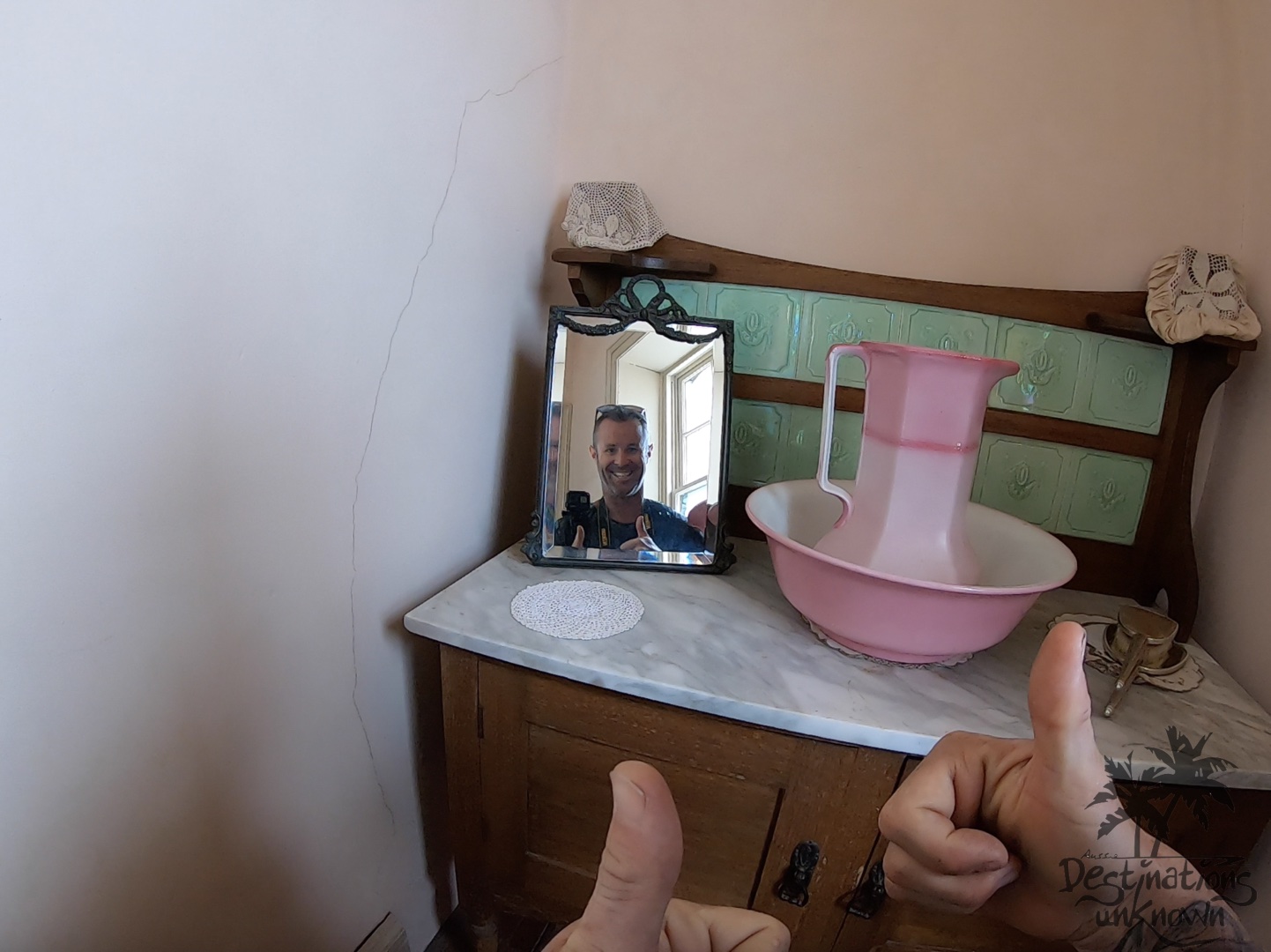
Room 8 is the Children’s Bedroom or ‘Room of Games and Laughter’ and has a giant game of snakes and ladders that entertained the kids for quite a while. The names of all 15 children are on the wall along with their birth dates.

Room 9 is the Guest Bedroom or ‘The Room with a View’ and boy does it have a view – the window overlooks The Nut!
Room 10 is The Nursery or ‘Room of Changes’ and is my favourite room in the house. The stroller parked in front of the window overlooking the garden is the picture that has been etched into my mind forever.


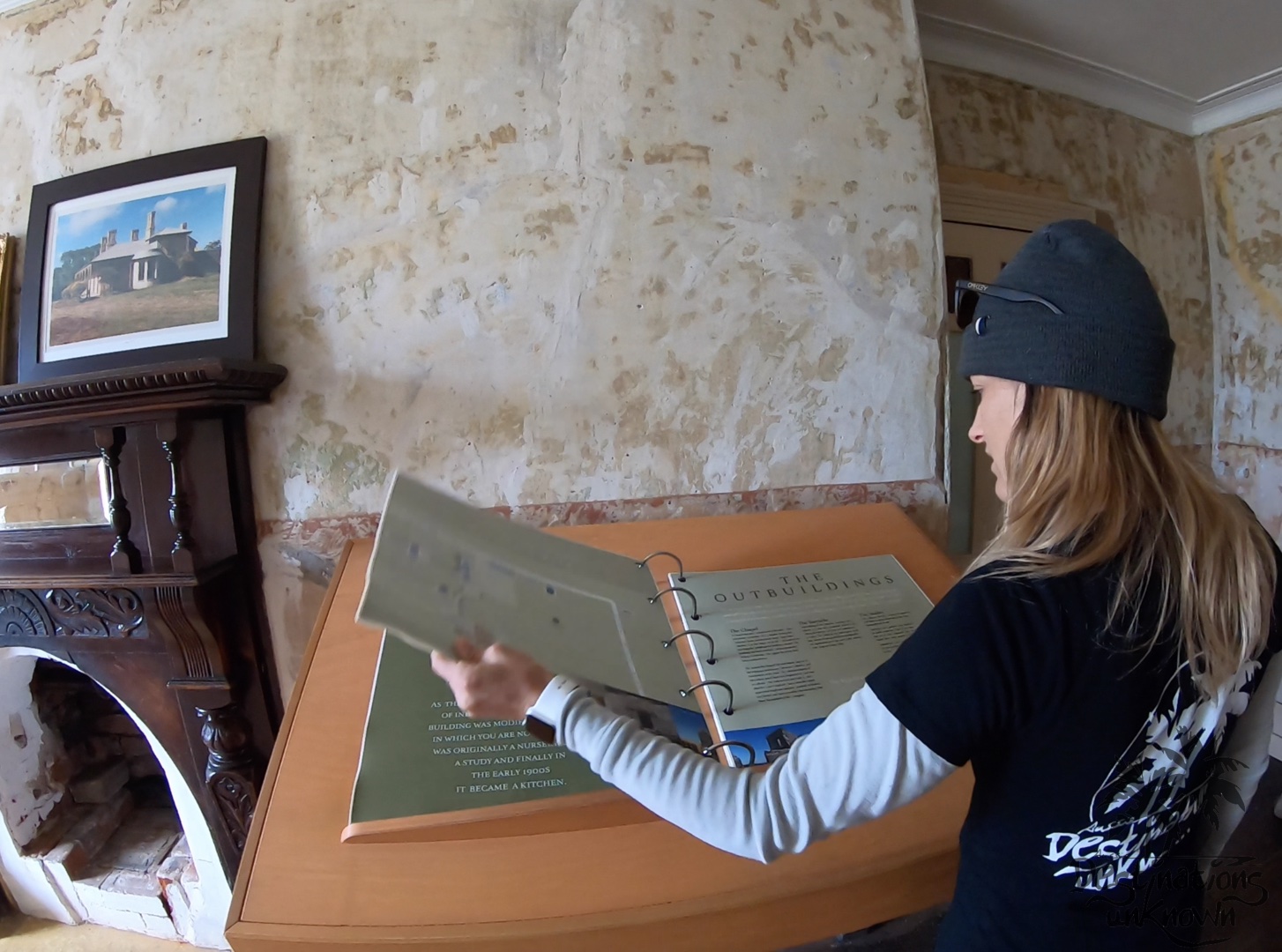

Room 11 is The China Closet or ‘The Room of Remnants’ and is filled with broken and discarded china.
Room 12 is The Kitchen or ‘The Room of Abundance’ and is set up like a working kitchen; there is even a recipe book sitting on the island bench and butter making equipment along the walls.
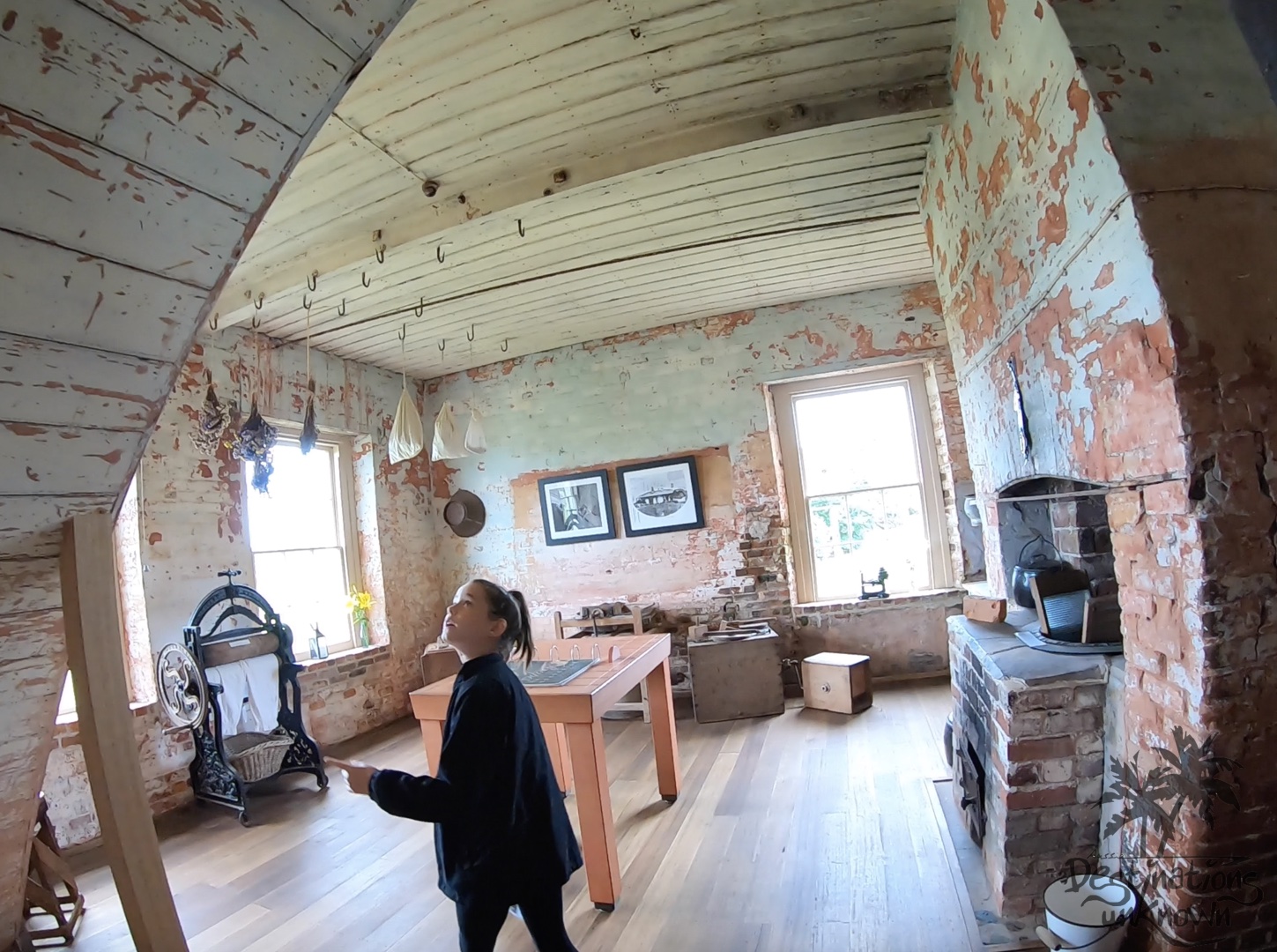


Room 13 is The Chapel or ‘The Room of Preaching and Piety’



Numbers 14-19 were buildings like the stable, threshing barn, cart shed, straw barn. Some of these buildings have been set up to host weddings and functions. I’ve seen some wedding images online and they are truly beautiful – dripping with old-time romance.
http://www.michelledupont.com.au/blog/laura-will-highfield-house/



We thoroughly enjoyed our time at Highfield House and are so glad we decided to stop by.
‘Highfield may be made from bricks and mortar, but it means much more than that. Highfoeld represents both the capacity of human endeavour towards both enterprise and disaster.
Curiously the house was built at a time when the Company was on the verge of ruin.
On this most spectacular site at the edge of the world, this is the story of either enterprise or folly. Success or tragedy. You decide!’


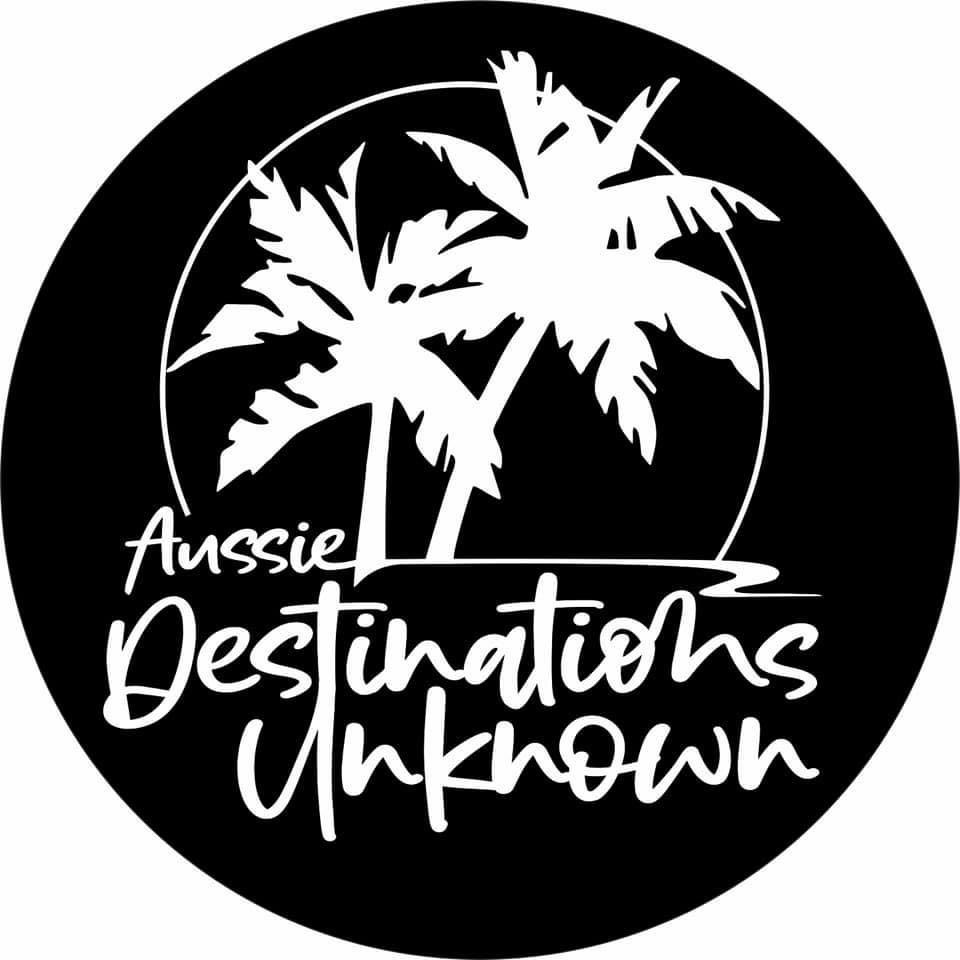
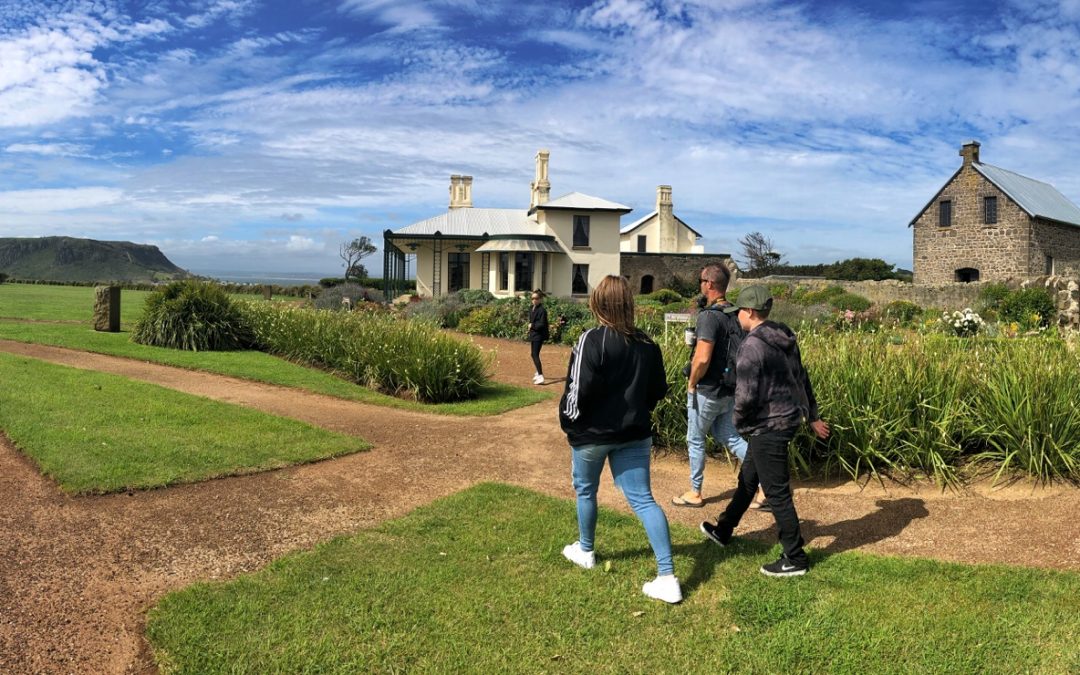
Hey Miriam and Family! Love, love, love what your doing with your adventures and capturing such amazing moments, you have a way of making the viewer feel like they are part of the story. Keep up the great work in inspiring adventure, curiosity and learning as well as capturing the beauty in nature, the past and present as a family. Very inspiring! So many exclamation marks, I’m not yelling, just very excited haha. Happy adventuring!!!
Oh thank you so much for your kind words – and all your exclamation marks! It’s wonderful to know that my stories are making you feel included and inspired as that is most definitely what I am trying to achieve. I love what we do and I also love writing, so I am very happy that the two seem to go well together – haha! 🙂